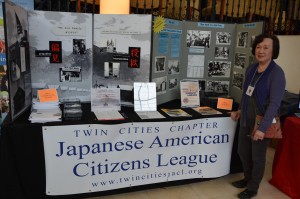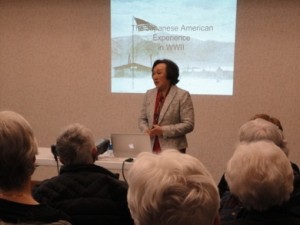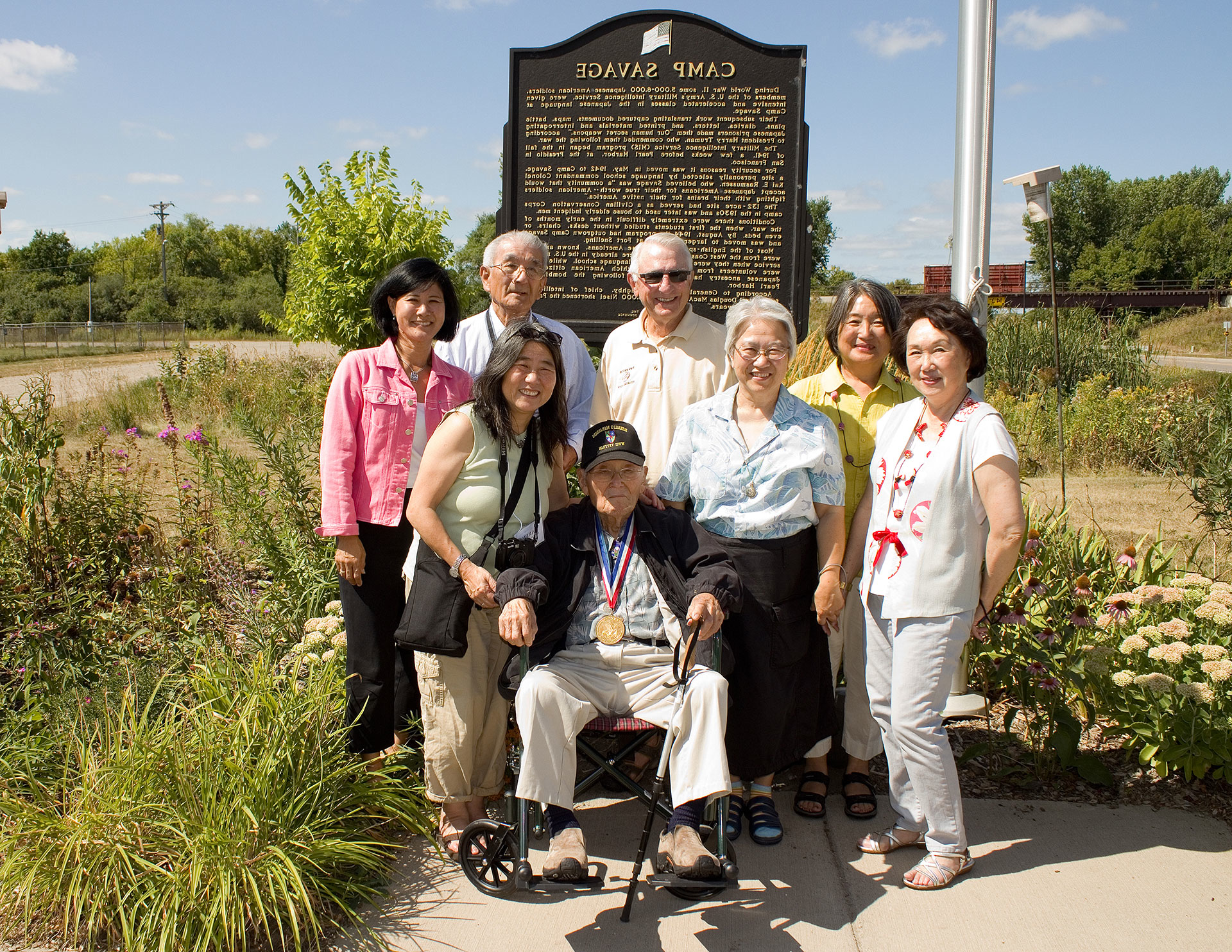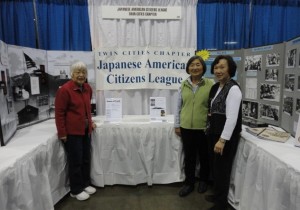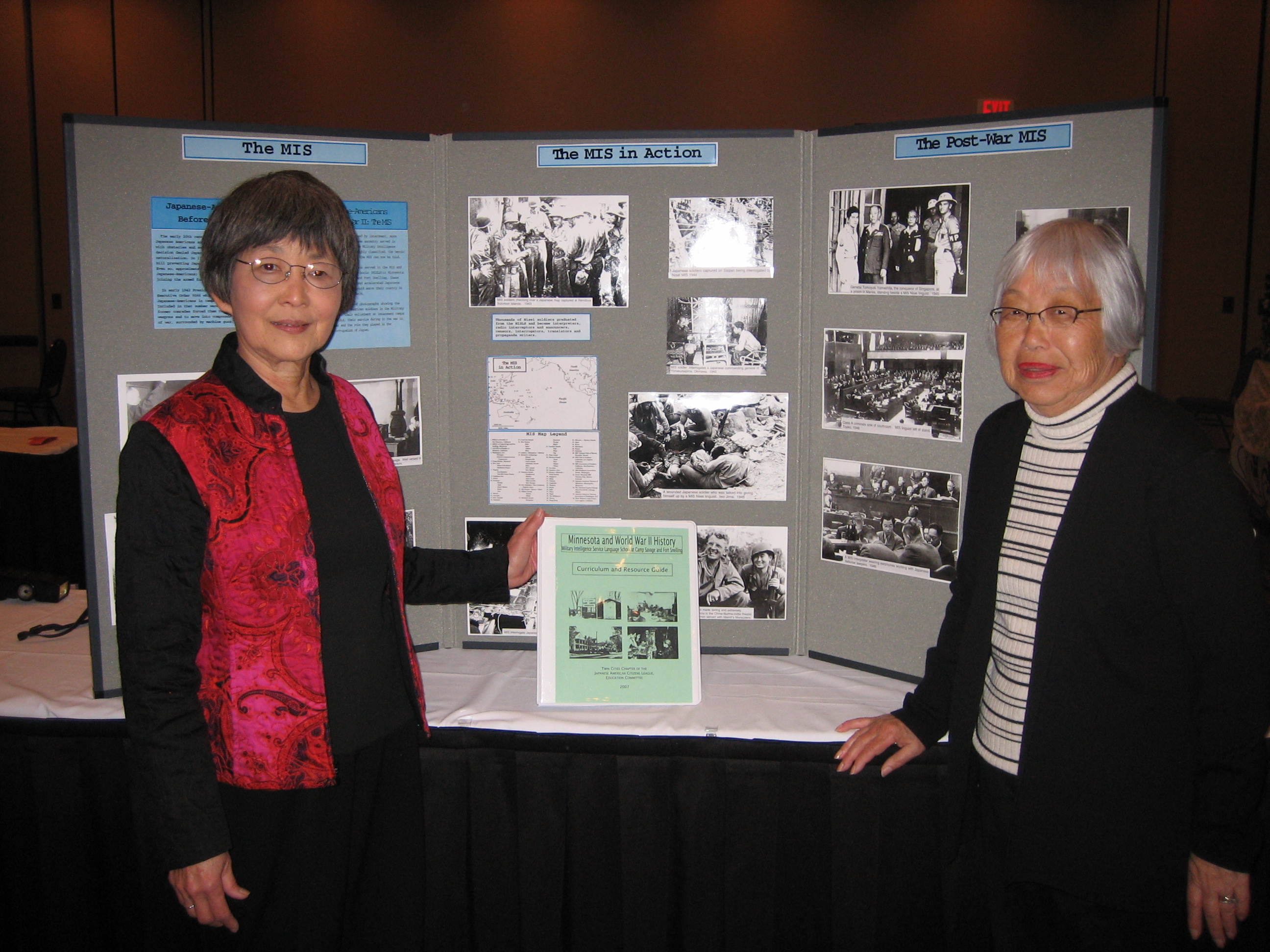This year has been another productive year for the Twin Cities JACL Education Committee. Below is an update of our committee’s activities since last year’s banquet.
Speaker Requests
Our committee filled the following requests for speakers:
- December 16, 2013 – Two classes at Century Middle School in Lakeville, MN
- March 11, 2014 – Christ’s Household of Faith School in St. Paul, MN in Pamela Alsbury’s 10th grade American History class
- March 20, 2014 – North Mankato Taylor Library for “One Book, One Community,” the first of a series of Community Read events centered around When the Emperor Was Divine, by Julie Otsuka
- May 9, 2014 – Charaka Community Support Program in Bloomington, MN
- May 22 and 28, 2014 – Six classes of 6th grade students at Pioneer Ridge Middle School, Chaska, MN
- May 29, 2014 – U.S. Attorney’s Group at the Federal Building in Minneapolis, MN
- September 30, 2014 – Seven AP Literature classes at Irondale High School, New Brighton, MN. Students were studying the book When the Emperor Was Divine
- November 3, 2014 – New Sociables Women’s Organization in Apple Valley, MN
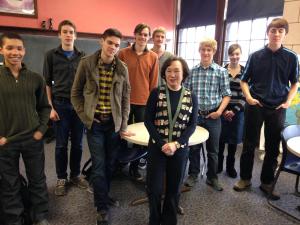
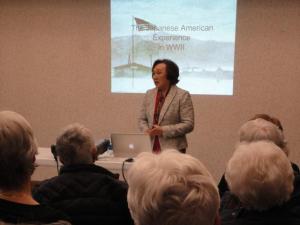
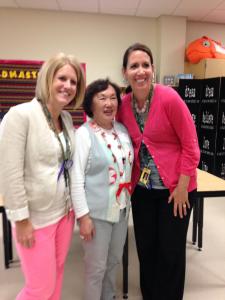
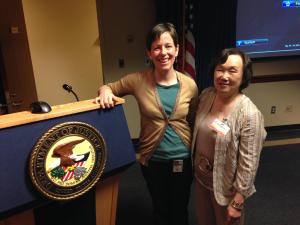
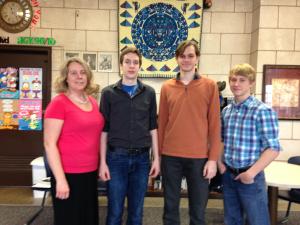

National History Day
We provided assistance to the following students with their National History Day projects:
- March 11, 2014 – Three 10th grade students at Christ’s Household of Faith School in St. Paul, MN. Anders Strandlund, Wynston Harms, and Tim Rohlf received Honorable Mention at the state competition in the senior group documentary category for their video titled, “Behind Barbed Wire: Violations of Japanese Americans’ Civil Rights During World War II.”
- March 25, 2014 – Three 7th grade students, Kashia Yang, Solomon Xiong and Andrew Hoang, students of Steve Cox at Washington Technology Magnet School in St. Paul, MN for their junior group documentary project.
- June 1, 2014 – Mary Jo Dalsin, 7th grader from St. Wenceslaus School in New Prague, MN. She went on to win 3rd place in the Junior Individual Documentary category at the National History Day Contest in Washington, D.C. for her documentary film titled, “Japanese Internment Camps: Rights, Responsibilities, and Reparations.” Her video can be viewed at: http://www.tcjacl.org/archives/619
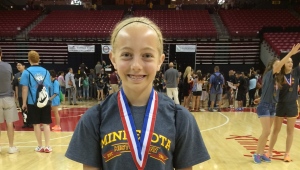
Other Committee Activities
- Participated in the Minnesota Council for the Social Studies and Great Lakes Area 2014 Annual Conference held on March 11, 2014 at the Sheraton Hotel in Bloomington. Staffed an information booth and distributed free copies of our committee’s teaching curriculum on the Military Intelligence Service (MIS) Language School. Also distributed complimentary copies of the JACL National Education Committee curriculum and resource guide. Supported by a grant from the JACL Legacy Fund.
- Participated in “Many Stories, Many Perspectives: A Community Conversation” to help shape the future of Historic Fort Snelling, held on October 9, 2014 at Historic Fort Snelling Visitor Center. Since the Military Intelligence Service Language School was relocated during World War II from the Presidio in San Francisco, CA, to Camp Savage, MN, then to Fort Snelling, our committee felt that input from our community is vital to ensure that the MIS story continues to be told. Nearly 6,000 Nisei soldiers received intensive and accelerated training in the Japanese language in Minnesota. After training, these soldiers served in the Pacific Theater of Operations as translators, interpreters, and interrogators, and their work is credited with shortening the Pacific War by two years. After the war, MIS soldiers served during the Occupation of Japan in the war tribunals and during the rebuilding process.
- On December 31, 2013, our committee met with Eric Saul, curator of the exhibit, “Go for Broke: Japanese American Soldiers Fighting on Two Fronts.” We have been meeting with staff from the Minnesota Historical Society and the National Japanese American Historical Society about bringing the exhibit to our area. The exhibit is scheduled to open in April 2015 at the historic Ft. Snelling Visitors Center.
- The Twin Cities is one of five sites selected for a Teacher Training Workshop on “The U.S. Constitution in Times of Crisis,” presented by the National JACL Education Committee with funding from the U.S. Department of the Interior, National Park Service, Japanese American Confinement Sites grant program. Our committee is hosting the workshop, scheduled on April 24, 2015 at the Historic Ft. Snelling Visitors Center, St. Paul, MN.
Educational Resource Collection
We added several resource materials to our collection donated from the estate of Tom and Reiko Ohno. For a complete list of videos/DVDs, books, teacher guides and other resource materials, visit: http://www.tcjacl.org/education/materials.
Donations
The Education Fund received donations given in memory of Reiko Ohno from Carolyn Nayematsu and Vincent Platt, Al and Kay Yamamoto, Joyce Yamamoto and Steve Markgraf, and George and Judy Murakami.
Committee Members
Members of the Twin Cities JACL Education Committee are: Sally Sudo (co-chair), Carolyn Nayematsu (co-chair), Janet Maeda Carlson, Sylvia Farrells, Lil Grothe, Cheryl Hirata-Dulas, Lucy Kirihara, Gloria Kumagai, Karen Tanaka Lucas, and Matthew Walters. For more information, contact Sally Sudo at 952-835-7374 or ssudo@comcast.net.




